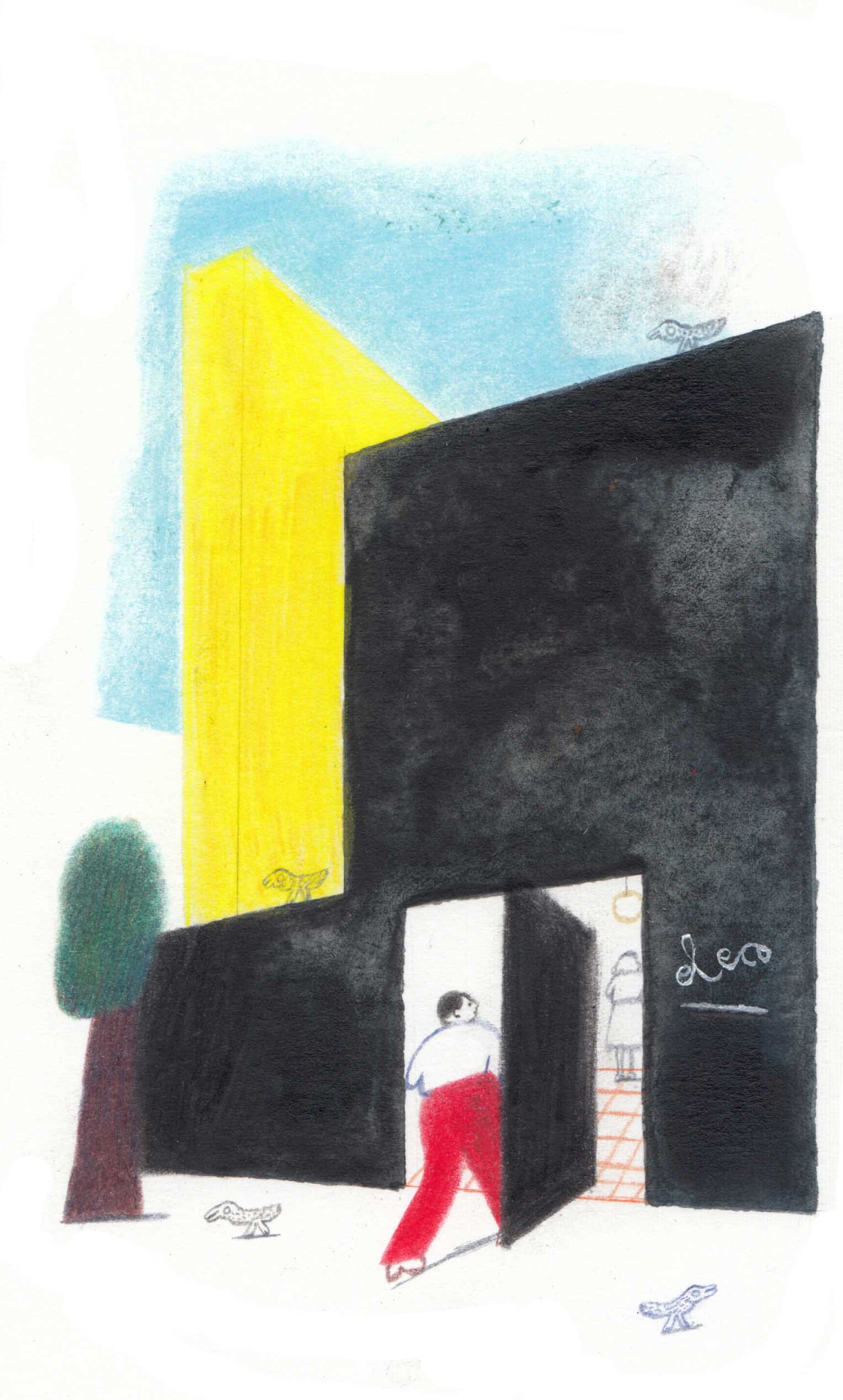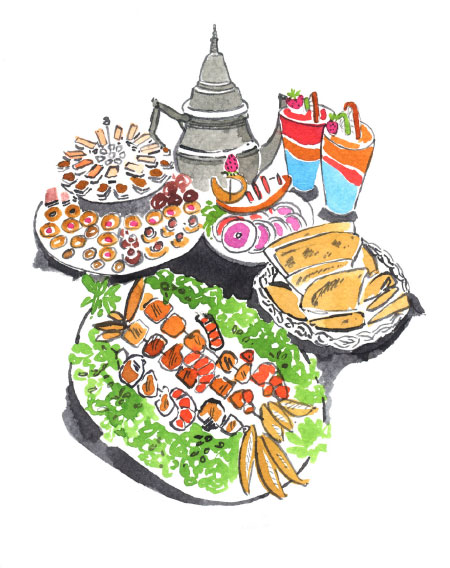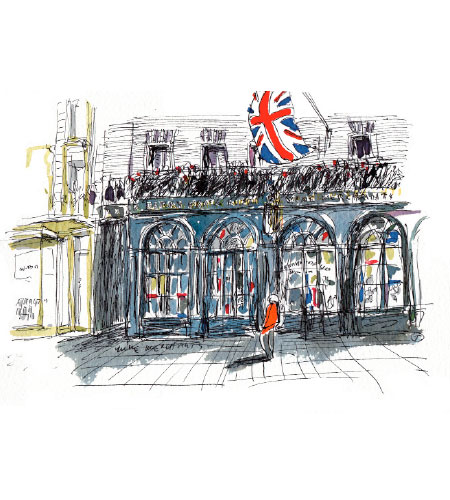
An enchanting mosque in Cairo by Philip Hewat-Jaboor
Aqsunqur Mosque, Bab el-Wazir Street, Tabbana Quarter, Cairo
There’s something profoundly enchanting about Egypt. The light and the landscape are so extraordinary, with the Nile snaking through the country, and this belt of lush green landscape, which then stops abruptly. You can literally stand with one foot in the green and the other in the desert. The Egyptians are hugely welcoming – an absolute pleasure to spend time with. I’ve been going there for 35 years and I spend two to three months there every year. I especially love Cairo. It has wonderful architecture: Pharaonic, Islamic, 19th-century, and now, with new Egyptian museum, 21st century. In the old Islamic quarter there’s a little mosque, the Aqsunqur, or Blue Mosque, which isn’t particularly well known or visited, and is a little hard to find. Parts of it were built in the 1340s, others in the mid-17th century, and there are walls completely covered in marble, precious stones and blue tiles brought from Damascus – a wonderful combination of materials, with a courtyard grown over with palm trees. It’s all incredibly beautiful, with the most magical atmosphere. I really find it very moving.
Philip Hewat-Jaboor is an art advisor and the chairman of Masterpiece art fairs (June 26 – July 3, 2019; masterpiecefair.com)
Your address: The St. Regis Cairo
An historic jazz club in New York by Reggie Nadelson
206 West 118th Street, New York
In the early 1940s, Charlie Parker and Dizzy Gillespie got together and invented bebop. They did it at Minton’s Playhouse, a shabby club on 118th Street in Harlem. Bebop was brand new; it was modern jazz: difficult to play, impossible to dance to. The music eventually moved to 52nd Street and Greenwich Village, to clubs where the audience sat in reverent silence trying to work it all out. Miles Davis, Ray Brown and Max Roach joined in, and bebop blew everyone away. As jazz moved away, the great Harlem clubs and ballrooms shut down. Then, in the 21st century, the neighborhood made a comeback. Great restaurants opened all over Harlem, and so did Minton’s Playhouse. A spiffy room with photos of Dizzy and Charlie on the walls, Minton’s showcases some of the best jazz around, and shares its premises with The Cecil Steakhouse, which serves great steaks and terrific drinks.
Reggie Nadelson is the author of At Balthazar: The New York Brasserie at the Center of the World
Your address: The St. Regis New York


An off-the-beaten-track Florentine restaurant by Filippo Ricci
Osteria delle Tre Panche, Via A. Pacinotti 32/R, Florence
When people ask me for a restaurant recommendation, I always suggest Osteria delle Tre Panche. We’ve been going there since it opened, and we probably still go at least twice a week, because whenever friends visit, they want to go too. It’s tiny – and not in typical restaurant territory. Just one room, for 20 people max, all sitting on benches (or panche) and a really small kitchen. But it’s a tremendous dining experience. The Osteria specializes in truffles – they have one of the best white truffle sauces in Italy. But in my opinion it’s all about the cheesecake, arguably the best in the world. It’s so good that people FedEx it to the US. Nowadays two young guys, Andrea and Vieri Bista, run the restaurant. They’re both chefs, but they alternate daily – one guy cooks, the other waits the tables. They’re so good, we’ve taken them around the world with us – Shanghai, Moscow, Miami, Las Vegas, Dallas, all over. We like to host dinner parties wherever we go, and we love to bring this Italian flavor. We have countless Michelin-starred restaurants in Florence, but for me, this is still the best.
Filippo Ricci is creative director of Florence-based luxury tailoring house Stefano Ricci (stefanoricci.com)
Your address: The St. Regis Florence
A poster museum in Shanghai by Timothy Parent
Propaganda Poster Art Centre, Room B-OC, 868 Huashan Rd, Shanghai
I came across Shanghai’s Propaganda Poster Art Center through a friend who suggested it as somewhere to take visitors looking for a bit of culture. Shanghai is more of a city for living than sightseeing – that’s more Beijing’s thing. So, very few people know about this museum, which is pretty tucked away, in the basement of an old residential complex. But that’s kind of the cool thing about it. You feel you’ve really discovered something. It’s a visual representation of China’s ideology from the 1950s to the 1980s – mostly posters, but with some comics – and it’s fascinating to see how the country changed during those decades. It’s like a unique window into China’s recent history. There are a lot of posters about economic growth, sport, film and the other big theme, crushing the West. There are also interesting themes about the Chinese working with “suppressed groups” and how they aligned themselves with certain African and Asian countries. And some are very futuristic. It’s pretty enlightening, for sure. You could easily spend half a day there if it’s the kind of thing you’re interested in.
Timothy Parent is the founder of the chinafashionbloggers.com and a contributor to The Business of Fashion
Your address: The St. Regis Shanghai Jingan















































